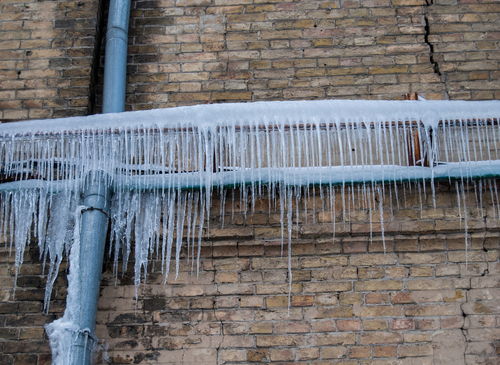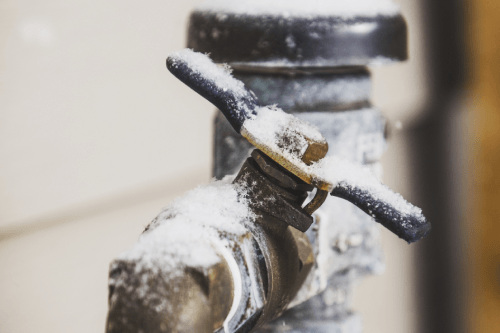Protecting Against Frozen Plumbing in Winter: Critical Advice
Protecting Against Frozen Plumbing in Winter: Critical Advice
Blog Article
This great article down the page pertaining to 6 Ways to Prevent Frozen Pipes is totally interesting. Don't miss out on it.

Cold weather can damage your pipes, specifically by freezing pipelines. Here's how to avoid it from occurring and what to do if it does.
Intro
As temperature levels decline, the threat of frozen pipes increases, potentially resulting in expensive fixings and water damages. Comprehending just how to prevent frozen pipes is critical for homeowners in cold climates.
Prevention Tips
Shielding at risk pipes
Wrap pipelines in insulation sleeves or utilize heat tape to shield them from freezing temperature levels. Focus on pipelines in unheated or exterior locations of the home.
Heating strategies
Keep interior rooms properly warmed, especially locations with pipes. Open up cabinet doors to enable cozy air to circulate around pipelines under sinks.
Exactly how to recognize icy pipes
Look for lowered water flow from faucets, unusual odors or sounds from pipelines, and noticeable frost on exposed pipes.
Long-Term Solutions
Architectural modifications
Think about rerouting pipes away from outside walls or unheated areas. Include extra insulation to attics, cellars, and crawl spaces.
Updating insulation
Buy high-quality insulation for pipes, attics, and walls. Proper insulation helps maintain regular temperature levels and reduces the threat of icy pipelines.
Securing Outdoor Plumbing
Yard pipes and outside faucets
Disconnect and drain pipes yard hoses prior to winter. Set up frost-proof faucets or cover outside taps with insulated caps.
Comprehending Icy Pipelines
What causes pipelines to ice up?
Pipelines freeze when exposed to temperature levels listed below 32 ° F (0 ° C) for expanded periods. As water inside the pipes freezes, it broadens, putting pressure on the pipe walls and potentially causing them to rupture.
Dangers and problems
Icy pipes can bring about water interruptions, home damage, and costly repair work. Ruptured pipes can flood homes and trigger comprehensive architectural damages.
Indications of Frozen Piping
Identifying frozen pipelines early can stop them from breaking.
What to Do If Your Pipelines Freeze
Immediate activities to take
If you presume icy pipelines, maintain taps open to alleviate pressure as the ice thaws. Make use of a hairdryer or towels soaked in hot water to thaw pipelines slowly.
Conclusion
Preventing icy pipes requires aggressive steps and fast actions. By understanding the reasons, signs, and safety nets, property owners can safeguard their pipes during winter.
5 Ways to Prevent Frozen Pipes
Drain Outdoor Faucets and Disconnect Hoses
First, close the shut-off valve that controls the flow of water in the pipe to your outdoor faucet. Then, head outside to disconnect and drain your hose and open the outdoor faucet to allow the water to completely drain out of the line. Turn off the faucet when done. Finally, head back to the shut-off valve and drain the remaining water inside the pipe into a bucket or container. Additionally, if you have a home irrigation system, you should consider hiring an expert to clear the system of water each year.
Insulate Pipes
One of the best and most cost-effective methods for preventing frozen water pipes is to wrap your pipes with insulation. This is especially important for areas in your home that aren’t exposed to heat, such as an attic. We suggest using foam sleeves, which can typically be found at your local hardware store.
Keep Heat Running at 65
Your pipes are located inside your walls, and the temperature there is much colder than the rest of the house. To prevent your pipes from freezing, The Insurance Information Institute suggests that you keep your home heated to at least 65 degrees, even when traveling. You may want to invest in smart devices that can keep an eye on the temperature in your home while you’re away.
Leave Water Dripping
Moving water — even a small trickle — can prevent ice from forming inside your pipes. When freezing temps are imminent, start a drip of water from all faucets that serve exposed pipes. Leaving a few faucets running will also help relieve pressure inside the pipes and help prevent a rupture if the water inside freezes.
Open Cupboard Doors
Warm your kitchen and bathroom pipes by opening cupboards and vanities. You should also leave your interior doors ajar to help warm air circulate evenly throughout your home.

Do you really like reading about 6 Ways to Prevent Frozen Pipes? Write a remark down the page. We'd be happy to know your responses about this content. Hoping to see you back again in the near future. Do you know another person who is very much interested in the subject? Do not hesitate to promote it. I praise you for your time. Kindly pay a visit to our website back soon.
Details Here Report this page